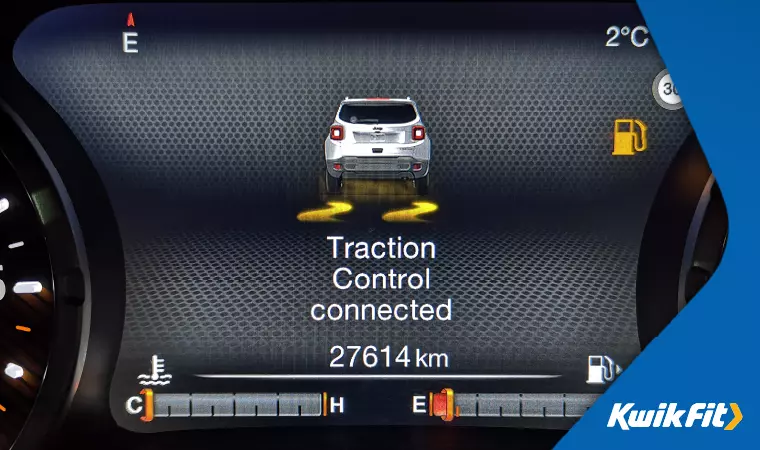What is Traction Control & How Does it Work?
Jack Dreyer | Tuesday 9th May 2023 12:00pm

Traction control is one of those modern innovations that you rarely think about until you really need it – or don’t. In a similar vein to things like TPMS and ABS, it’s actually been available technologically since the 1960s but has only recently become affordable enough to be widespread.
Traction control is there in the background helping to keep you safe, but what exactly is it and how does it work?
Let’s find out!
What does traction control do?
The short answer here is that traction control helps keep your wheels turning at the right rate for the conditions on the road – this stops them slipping and losing traction (which can result in you skidding uncontrollably) and makes sure you can continue steering effectively.
The most common situations for traction control to kick in are in heavy rain or in icy conditions, but it can also be helpful on roads with gravel, debris, or dry country dirt roads.
How does traction control work?
Like with early tyre pressure monitoring systems, traction control makes use of sensors to assess how quickly the wheels are turning relative to the power being supplied to them. In normal conditions where the wheels can maintain stable grip with the ground, the power supplied to the wheels shouldn’t be the same as the rate the wheels turn because there’s a resistive force being applied in the opposite direction.
In other words, the wheels need to turn while gripping the ground in order to move the car. If the wheels turn at the same rate that power is being supplied, then the car won’t move because it means the wheels are slipping in the same spot.
Most of the time, the wheel slips because too much power is being supplied to it – so the rotational force supplied by the engine overpowers the available resistance on the road. The solution here, what traction control does in real time, is to dynamically reduce the supplied power so that it doesn’t overpower the resistance of the road.
Usually, this is perfect for going around corners in wet conditions, or maintaining acceleration through roads that might have variable traction – such as puddles to one side.

When should you turn traction control off?
In some cases, however, this benefit becomes a hindrance. While you’re moving, it makes sense to limit the supplied power because you’ll also have the accumulated momentum to keep you going. But this becomes the opposite of what you want when you’re stuck.
Imagine you’re stuck in snow and ice with traction control turned on. As you press down the accelerator, the wheel will spin freely for a moment and then all power from the engine will be cut. The solution in these instances is to turn off traction control (where possible) and try to pull away in a higher gear.
Concerned your traction control isn’t working?
Like with brakes and tyres, traction control is definitely something you want operational when you need it. It can be the difference between a safe drive and a disastrous crash. If you’re concerned that your traction control isn’t working effectively, get in touch with your local Kwik Fit centre to book an appointment.
Any facts, figures and prices shown in our blog articles are correct at time of publication.
Featured Articles
Is it Illegal to Drive With One Headlight?
Saturday 19th July 2025
Wondering if it’s illegal to drive with one headlight? Learn about the safety risks and penalties of illegal blown bulbs and why you should fix them promptly.
Air Con in EVs & Hybrids: Experts Answer Your Questions
Monday 30th June 2025
Does air con drain EV batteries? Can you use the air con while charging an electric car? Find out the answers to these questions & more from Kwik Fit’s experts.
Why Is Your Car Making a Noise? Fixes & Tips
Friday 13th June 2025
When your car starts making unexpected noises, it can certainly be quite disconcerting; it may be nothing to worry about, but here’s what you need to know.









